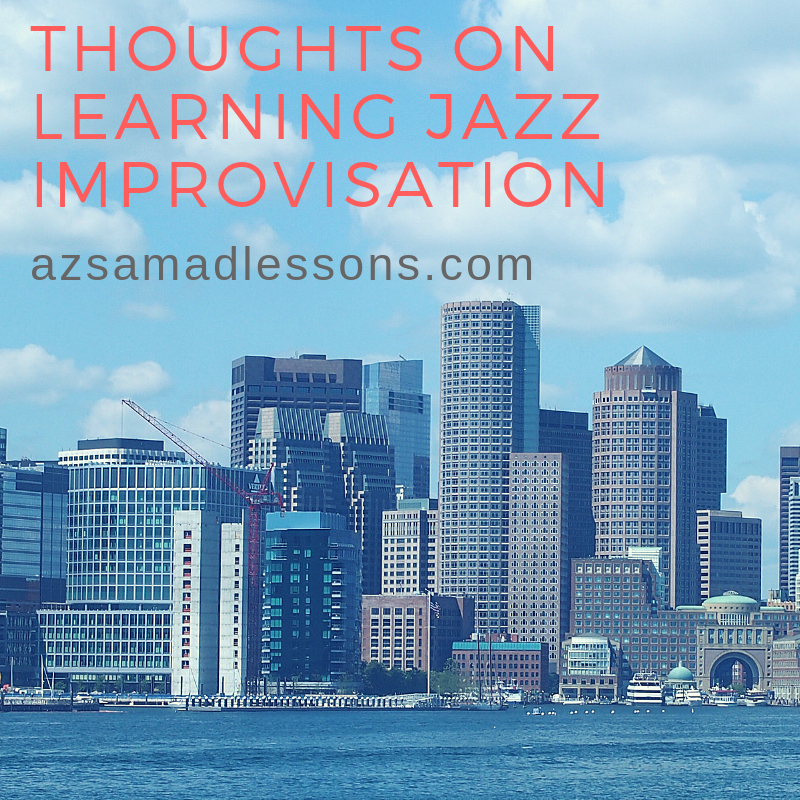
This is an old blog post (from my Xanga blog LOL) that I’m sharing as is, recently found in my archives:
—–
Saturday, March 04, 2006
Thought on learning jazz improvisation
I’ve been studying jazz for a few years now and though my quest for single-note improvisation vocabulary is still relatively new I’ve learned a few useful things that have proved to help me out.
1. Writing down you own solo
I first heard this advice from Shafie Obe, a jazz pianist who once taught for a while in my college back in KL. He reasoned out that if you can’t really improvise yet, you should write out a solo so that when you play a song, the “improv” section will sound good. Many will argue whether this should be done, but over the years, I’ve realised that doing this (writing it down) helps the learning process. Greg Lyons also suggested a similar concept in an emsemble that I studied with him. He suggested we write one chorus and learn to play it (or make a playable chorus) and improvise a second one in class. It helps a lot.
Another take on this concept came about two days ago when Tim Miller gave us a mostly straight 8th note stream of notes (written improv) for Stella by Starlight. He said he saw this in some Joe Pass books. I’ve seen this too and also saw it in Pat Martino’s site. Pat Martino called this something like “the unedited version”. He relates hearing lines moving continuously and while playing in “real time” he would edit and play only portions of what he heard. Joe Pass (via a recollection by Larry Carlton in a Guitar Player magazine issue) also recommended the same thing and according to Joe, he could tell how a student’s harmonic vocabulary was at by listening to how he or she improvises a stream of eight notes in a few choruses of the Blues.
I also read another blog where a player mentioned how a knowledgable audience member asked him “are you not connecting your lines between some chord for musical reasons or because you don’t know how to?”
It all seems to boil down to the same thing. Linear line connection via systematic practice of 8th note soloing over a tune.
2. Transciption
One of the first things I transcribed was a portion of a Charlie Hunter comping idea. I still remember it till today. Whether or not that it was correct is questionable but I learned a lot even though it was only about 2 to 4 bars. Recently, I’ve transcribed a Lester Young solo over the standard “Lulaby of Birdland”. We had to do the head and 2 choruses of a solo from the swing era. This did wonders for my sense of swing I think. My classmate said “I can hear you’ve been listening to a lot of swing”. Truth is- I was listening to a single Lester Young solo for more than 24 hours. (Yes, I’m not that fast a transcriber.)
Good thing was by the end of it, I could play it from memory with the recording. It’s wasn’t easy for me but I learned a lot. Lester plays around with the time and drags and rushes phrases. Beautiful sense of phrasing.
3. Writing your own tune
I wrote about 7-8 jazz “vehicles” based on certain models of pre-existing jazz tunes for my Jazz Composition 1 class last semester. Previously, I wrote stuff without trying to model them. Both are legit and cool ways but sometimes immersing oneself in a format can help one write within the limits set. Then you can go free. Also, writing and analysing a tune helps one navigate through standards.
To be continued…..
Originally posted 3/4/2006 11:49 AM on my old Xanga blog
Leave a Reply